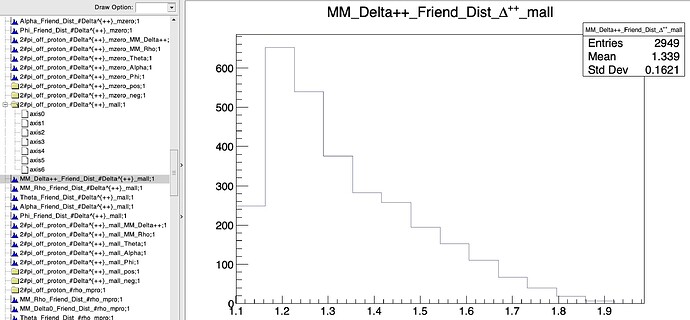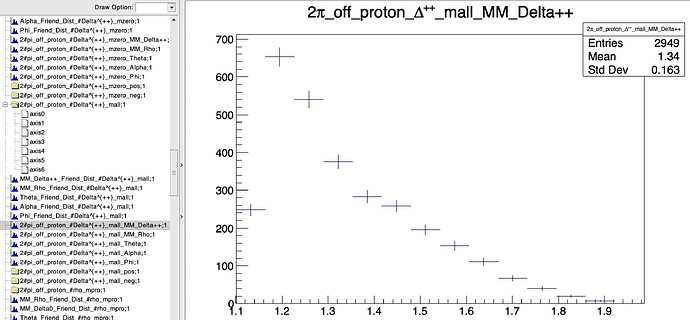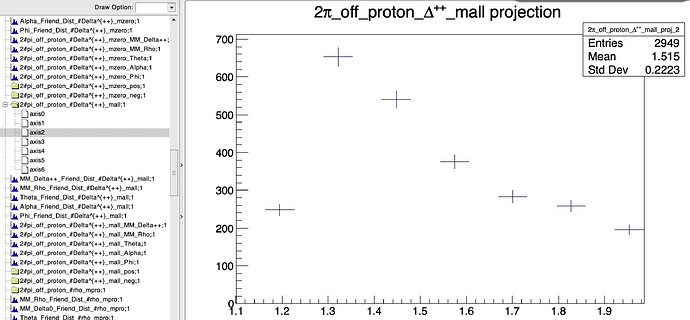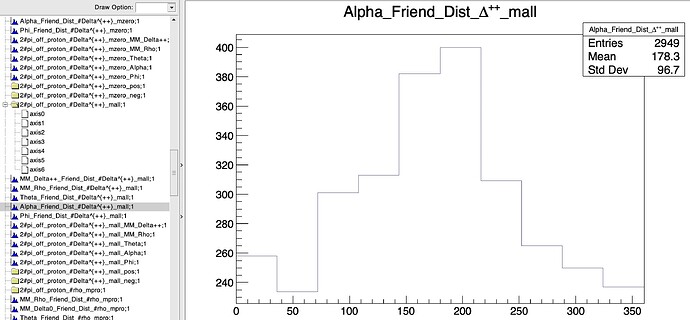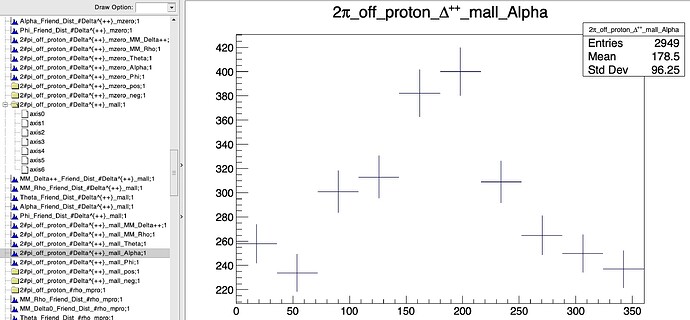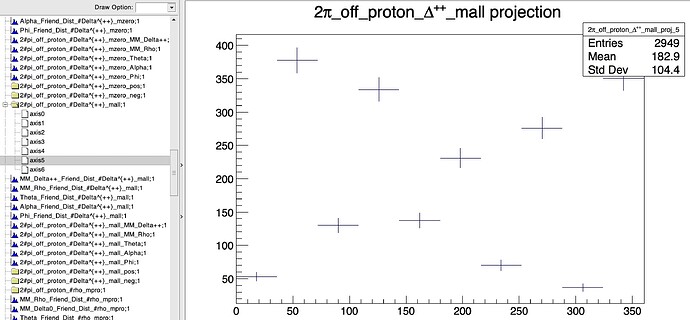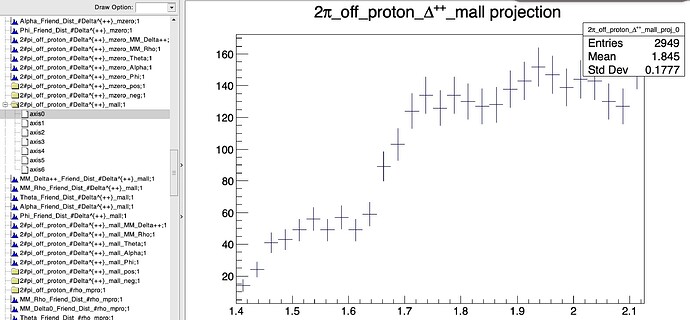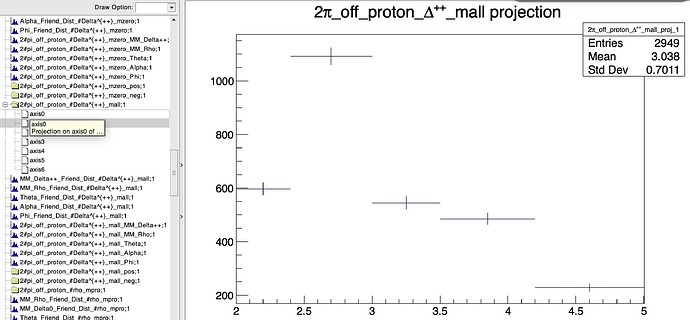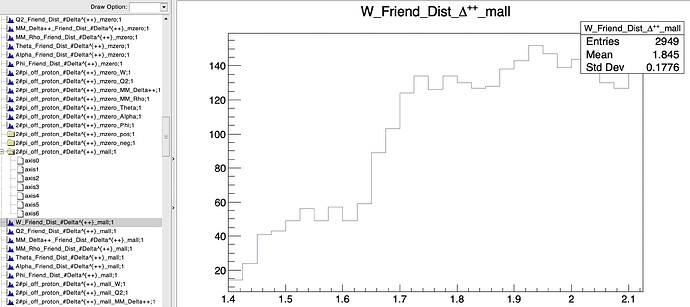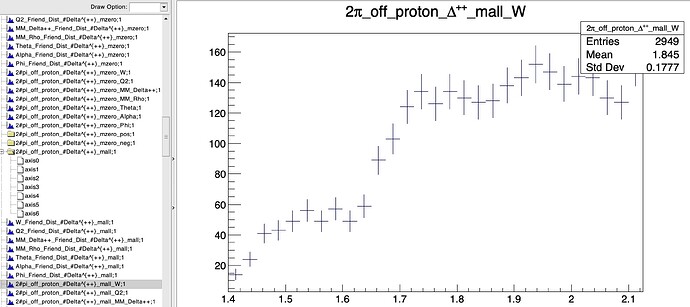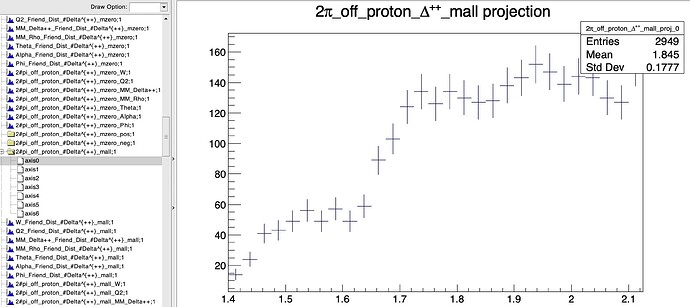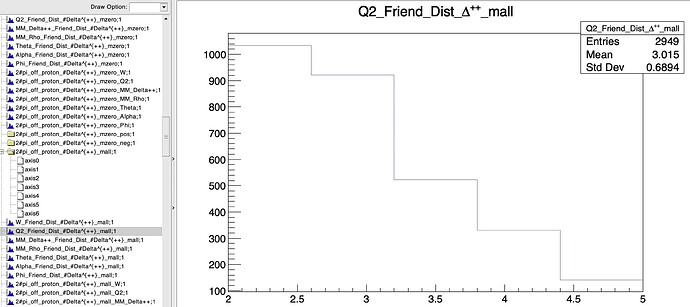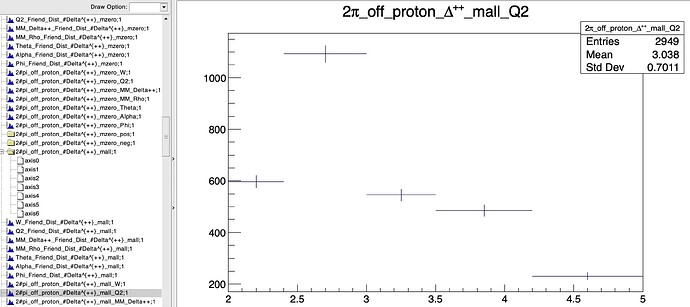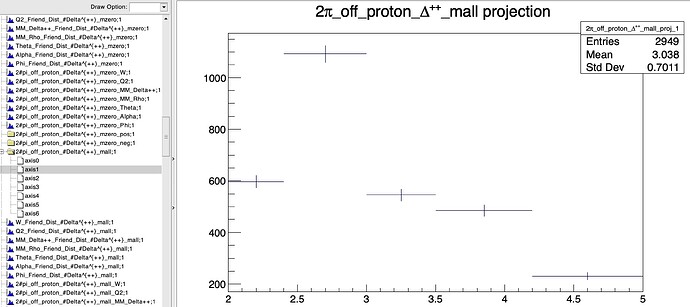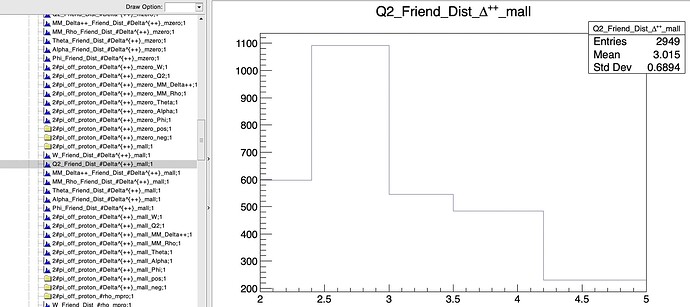I have a 7-dimensional THnSparseD Histogram (Friend) which I make in one program, output, and then read into another program to analyze. During this later analysis, I’ve consistently run into issues where the structures present are far from what I would expect, including every other bin empty for certain dimensions. In an effort to try and isolate where the issue is taking place, I went to where I’m filling the histogram:
void Histogram::Friend_Fill(const char* top_, float W_, float Q2_, float MM_, float MM2_, float theta_, float alpha_, float phi_ , int var_, bool thrown_, float weight_, int helicity_, float plus_weight_, std::shared_ptr<Flags> flags_){
if(!std::isnan(W_) && !std::isnan(Q2_) && !std::isnan(MM_) && !std::isnan(MM2_) && !std::isnan(theta_) && !std::isnan(alpha_) && !std::isnan(phi_) && !std::isnan(weight_)){
if(Histogram::OK_Idx(Histogram::Friend_idx(W_,Q2_,MM_,MM2_,theta_,alpha_,phi_,var_))){
double x;
x[0] = (double)W_;
x[1] = (double)Q2_;
x[2] = (double)MM_;
x[3] = (double)MM2_;
x[4] = (double)theta_;
x[5] = (double)alpha_;
x[6] = (double)phi_;
TThread::Lock();
_Friend[var_][fun::top_idx(top_)]->Fill(x,weight_);
_MM1_Dist[var_][fun::top_idx(top_)]->Fill(MM_,weight_);
_MM2_Dist[var_][fun::top_idx(top_)]->Fill(MM2_,weight_);
_Theta_Dist[var_][fun::top_idx(top_)]->Fill(theta_,weight_);
_Alpha_Dist[var_][fun::top_idx(top_)]->Fill(alpha_,weight_);
_Phi_Dist[var_][fun::top_idx(top_)]->Fill(phi_,weight_);
TThread::UnLock();
}
}
}
I run this multithreaded, but one cannot fill THnSparse as such, so the TThread locks and unlocks allow it to happen by locking onto one thread at a time for the actual filling of the THnSparse.
The following histograms *_Dist are the 2nd-7th varable axes of the THnSparse. By filling them every time I fill the THnSparse, these should then be identical to a projection into any one of those axes by the full 7-d THnSparse. When writing these, I then do some additional projections to check this:
TH1D* check_7d[3][5][5];
char hname[100];
for(int i = 0; i <3; i++){//Variable Set
for(int j = 0; j<5; j++){//Topology
_Friend[i][j]->Write();
_MM1_Dist[i][j]->Write();
_MM2_Dist[i][j]->Write();
_Theta_Dist[i][j]->Write();
_Alpha_Dist[i][j]->Write();
_Phi_Dist[i][j]->Write();
for(int k=0; k<5; k++){
check_7d[i][j][k] = _Friend[i][j]->Projection(k+2,"E");
sprintf(hname,"2#pi_off_proton_%s_%s_%s",_var_names_[i],_top_[j],_friend_pars_[2+k]);
check_7d[i][j][k]->SetNameTitle(hname,hname);
check_7d[i][j][k]->Write();
}
}
}
As it turns out, the *_Dist 1-d histogram and their corresponding projection in the check_7d plots are, in fact, identical! However, when looking at the projection inside the THnSparse in the root file using TBrowser, we can see that the projection is already divergent and broken despite it having been written before even being projected to the expected representation! It is this divergent behavior which is consistent with what I’ve seen in the later analysis of it. I’ll try to upload some comparison plots
First looking at MM1, here is the MM_Dist histogram
The corresponding check_7d projection
The projection of the THnSparse as seen in TBrowser after it has been written
As another example, here is the Alpha_Dist histogram
The corresponding check_7d projection
As Alpha shows up in the TBrowser
What is fascinating is the first two axes actually look like how I would expect
and the MM histogram looks like it has the same values, but they’ve just had empty bins placed in-between them so it’s spaced out beyond the bounds of the histogram, while the Alpha has seemingly no correlation.
If anyone has any insight into this mystery please let me know. I have no idea what is going on.
_ROOT Version:_6.26.04
Platform: macOS Ventura 13.0
Compiler: g++
